Korean party
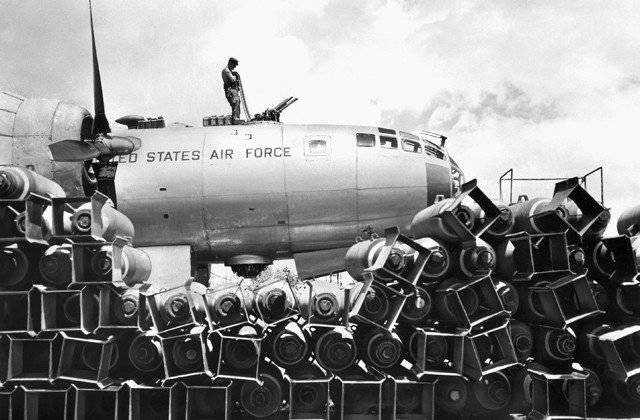
World powers in the war of the North and the South
The 1950 – 1953 Korean War was, in fact, the official finale of the alliance between the USSR and the Anglo-Saxon democracies and the real beginning of the Cold War. Though they consider Churchill's Fulton speech as such, it is still speech, and, moreover, Churchill did not hold official posts at the time of her pronouncement. And war is war. However, the cold war was the natural state of Soviet-American (or, more broadly, Soviet-Western) relations. The union created by Hitler was unnatural. No wonder the coalition of the USSR, the USA and the UK was called anti-Hitler. Moscow, Washington and London were situationally friends against a common enemy, and after its liquidation they returned to the natural state of mutual hatred.
The first hot war of the Cold War was the only one in which Soviet and American troops directly fought against each other. True, on the Soviet side, only a limited number of pilots of the 64th fighter air corps participated in the war. After that (as, however, before this), the Russians and Americans never fought among themselves. On both sides, the troops came together in battle with the experience of World War II, in which the current opponents were allies. And from a military-technical point of view, the Korean War was largely a continuation of World War II. The exception was the war in the air, where the jet began to dominate aviation, although piston aircraft continued to play a significant role. Moreover, since there were no anti-aircraft missiles yet, aviation flew high. The Korean War to this day remains the only one in which there were air battles in the stratosphere.
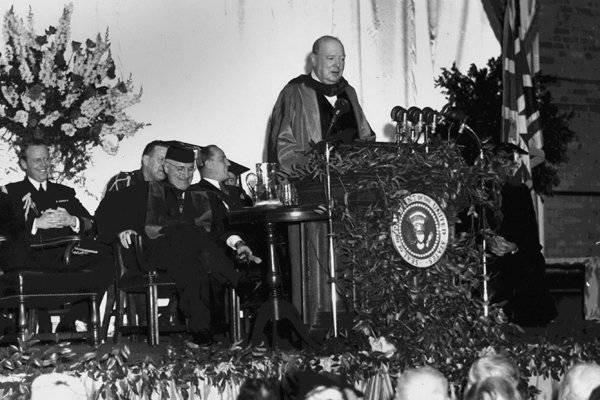
The winners of World War II, by dividing Korea liberated from Japan into the Northern (Soviet) and Southern (American) occupation zones, automatically laid the inevitability of war. Moreover, Moscow and Washington, out of habit, began to break their own zones through the knee, each one implanting their own rules there. The situation was further aggravated by the fact that during the period when Korea was under Japanese occupation, the leftist forces were very strong in the south, but practically absent in the north, dominated by nationalists. Accordingly, the new occupants began to deliberately harass the unpleasant, though very authoritative in the community, local leaders and implant those who had no authority, but the “elder brothers” liked more. In the south, this led to large-scale anti-American uprisings in the 1948 and 1949 years. An attempt to hold the 1948 th All-Korean elections under UN supervision in the summer failed. The North refused to take part in them altogether; the democratic nature of elections in the south was, to put it mildly, not obvious. The Right won under the leadership of Lee Seung Man. This led to a further split of the peninsula and brought it even closer to war. 15 August 1948 in Seoul was proclaimed the Republic of Korea, September 9 in Pyongyang - North Korea. After the withdrawal of Soviet and American troops from Korea, the two Koreas began to openly prepare for the destruction of each other.
The North Korean leader Kim Il Sung, who was 38 years old at the start of the war, turned out to be more active in this intention. Already in 17 years he became, speaking our language, a Komsomol (of course, illegally), and then led the anti-Japanese partisan detachment. He fought, like most other similar groups, not so much in Korea as in Manchuria, which was also occupied by the Japanese and where there was a partisan movement. At the end of 30, Kim Il Sung became the commander of one of the partisan divisions (her number was less than a thousand). There were more than a dozen such divisions, that is, he was not the leader of the entire anti-Japanese movement at that moment. But of course, Kim Il Sung became one of the most successful and effective guerrilla commanders, he conducted several very successful anti-Japanese operations in Manchuria and Korea. However, by the beginning of 1941, the Japanese had managed to almost completely crush the partisan movement in Manchuria. Kim Il Sung was essentially the only one whose squad escaped destruction. But he could not fight alone, so in March 1941-th his unit moved to the USSR. There, the future leader of the DPRK became the commander of the battalion of the 88 th rifle brigade of the Red Army stationed near Khabarovsk. In it served the Russians, the Chinese and the Koreans, both the citizens of the USSR of all these nationalities, and the partisans who came from Manchuria. The personnel of this brigade was used for anti-Japanese sabotage in Manchuria. At the same time in full force it was never used in battles.
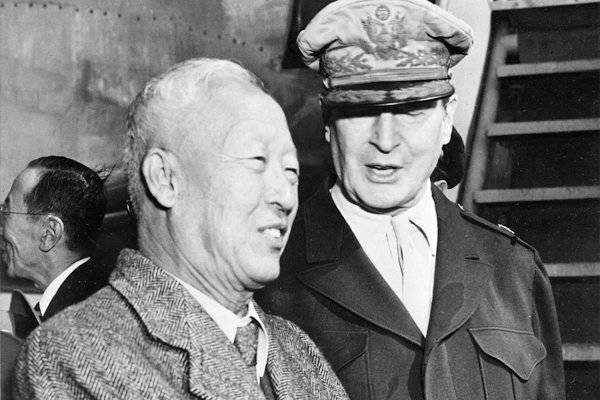
But it was on the captain of the Soviet army Kim Il Sung that the Kremlin stopped, choosing the leader of North Korea. In favor of Kim Il Sung, his partisan experience and personal loyalty to Stalin, as well as the fact that he was a native of Pyongyang, who became the capital of the new country, played. At first, the future leader of the DPRK did not show enthusiasm, in personal conversations he told our advisers that he would prefer to continue the career of a Soviet officer and become a division commander. But the Kremlin had other plans. Kim Il Sung gradually became involved and began to prepare an attack against the South in order to unite the country under communist control. And he began to pester Stalin, and then Mao with letters asking for help in preparing the war. Neither the Soviet nor the Chinese leaders were particularly enthusiastic, knowing that this could lead them to war with the United States. But by May 1950, Kim Il Sung still convinced Stalin that the war would be swift and victorious. Removed his objections and Mao.
The KPA offensive began early in the morning of June 25, 1950, the northerners had a noticeable superiority over the southerners in armored vehicles and aircraft, and their surprise was facilitated by the surprise attack. Already in the morning of June 28, the 105th tank The Korean People’s Army (KPA) brigade broke into Seoul. Despite the desperate resistance of the southerners, the northerners quickly advanced. Without US intervention, the southerners had no chance. And the United States did not stand aside. Since Taiwan occupied the place of China in the UN at that moment, and the USSR boycotted Security Council meetings because of this, the United States passed a resolution allowing the use of UN troops in Korea under the leadership of the United States.
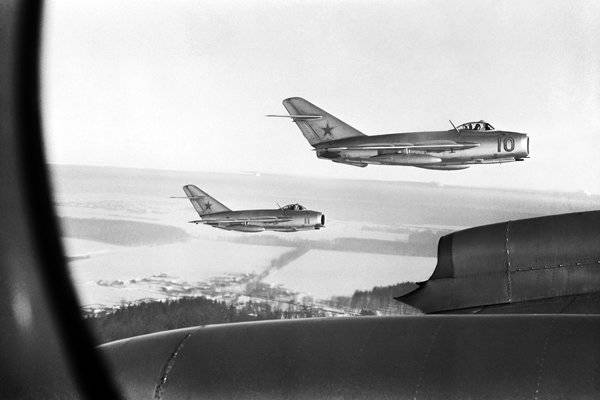
Already 27 June, American aircraft entered the battle (ground and deck), which immediately won complete air supremacy. And on July 1, parts of the US 24 Infantry Division began to land in Busan. 4 July she met in a battle with the KPA and immediately suffered a heavy defeat. July 20 the commander of this division, Major General Dean was captured by the northerners. At this point, only a small Busan bridgehead in the south-east of the country remained under the control of southerners and Americans (no more than 10% of South Korea’s territory). But he managed to keep it. This was facilitated by a significant increase in the number of UN forces on the bridgehead, and in fact NATO (by the end of August, five South Korean and American divisions and one British brigade), while reducing the front line, as well as the allies superiority in the air. This time violent attacks by northerners did not produce a result.
The Incheon amphibious operation of the US Navy, which began on September 15, brought a radical change to the war. This North Korean port (former Chemulpo, where the Varyag was killed), the northerners simply did not have time to prepare for the defense, his garrison was very small. Therefore, the Americans had here an absolute superiority in all components. Quickly capturing Incheon and building up a grouping there, they launched an offensive to the north. Already on September 23, the Americans captured Seoul, the KPA grouping in the south was surrounded. Most of it was destroyed and captured, until 30 thousands of fighters switched to guerrilla actions (in addition to ten thousand South Korean communist partisans). It must be said that the Americans and Southerners did not manage to solve the problem of the partisans until the end of the war, but they were not, of course, the decisive factor in this war.
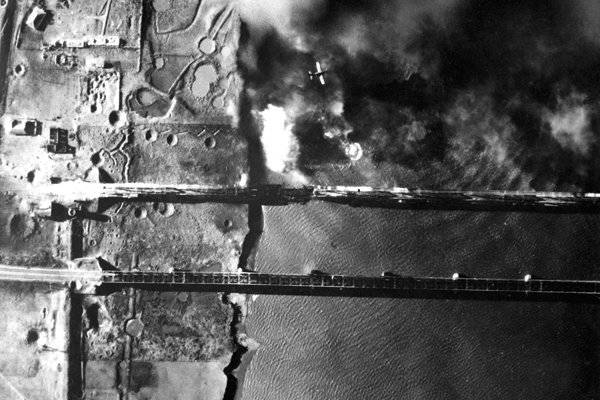
By October 8, American and South Korean troops reached the 38 parallel line, which was considered the border between the Koreas, and Pyongyang fell on October 20. Thus, in three months the situation has changed radically. Now the northerners had no chance without outside help.
There was fierce correspondence between Moscow and Beijing about what to do. Nobody wanted to go to war with the USA (especially China), but the Americans did not want to surrender the whole of Korea all the more. In addition, Stalin began to put pressure on Mao, albeit politely, but very actively, so that he would send troops to Korea. Therefore, already on October 16, regular units of the PLA under the pseudonym "Chinese People's Volunteers" began to move into the territory of the DPRK. Although by the end of October, the American and South Korean troops in some areas reached the Chinese border, the situation changed once again radically. The 30 Chinese divisions and the 17 divisions of the KPA (which suffered huge losses, but nonetheless did not lose combat capability) fell on seven American and ten South Korean divisions, two British and Turkish brigades. The front went south again, the Americans suffered heavy losses, the winter cold contributed to this. December 5 Communists returned to Pyongyang, and January 4 1951, again took Seoul.
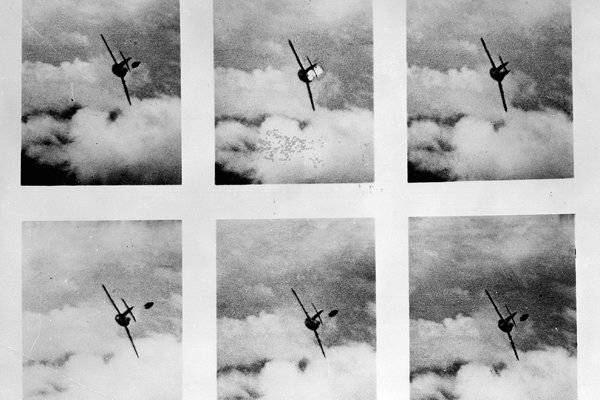
Beijing warned Washington in advance that the crossing of the 38 parallel by the Americans would force it to intervene. In the United States itself, as well as in Great Britain, many politicians and the military believed that it was necessary to limit the liberation of the south. But General MacArthur, the UN commander in Korea, was confident of success and did not want to listen to anyone. As a result, he received a catastrophe, which was the retreat of the American troops from the Chinese border to the south. As a result, the United States seriously thought about the use of nuclear weapons to save the situation. However, the danger of the USSR entering the war, which by that time also had nuclear weapons, did not allow these plans to be realized.
By mid-January 1951, thanks to air supremacy, the Americans managed to stabilize the front and even conduct a counter-offensive. 15 March they returned Seoul. MacArthur again rushed to advance to the north, but Truman dismissed him. Washington didn’t want the war with China to escalate, much less the war with the USSR. Moreover, the Americans developed a plan for the complete withdrawal of their troops from Korea in the event of Soviet invasion. However, it did not happen, and the April offensive of the Chinese on Seoul was able to repel. In May, the sides exchanged unsuccessful attacks, after which the front stabilized finally. The superiority of the Communists in manpower was compensated by the superiority of the allies in technology, especially in aviation. In addition, the Americans, not to mention the other UN troops, have practically lost their desire to fight. In Moscow and Beijing, too, there was no particular desire to continue the war. June 10 between the Chinese and Americans began official negotiations, which, however, dragged on for as long as two years. During these two years, the land front practically did not move, only the war in the air continued.
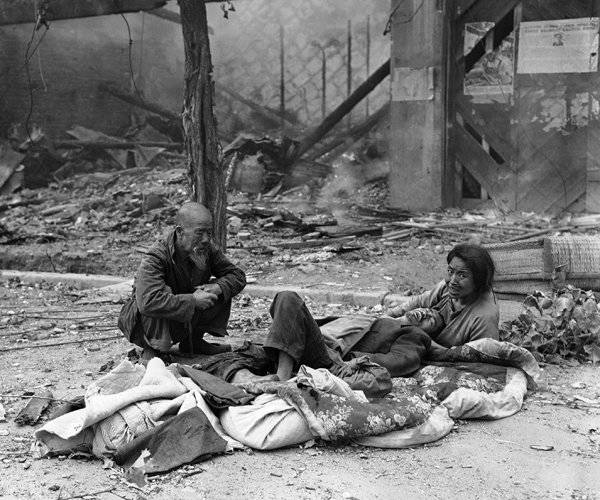
As already mentioned, it was air supremacy that was the strongest side of the US Armed Forces and their allies. At the beginning of the war, the US air force in Korea was about 700 aircraft, by the end of the war reached 2,4 thousands. They constantly attacked troops, communications, industrial facilities and infrastructure, the northerners and the Chinese suffered huge losses due to this. North Korea, by the beginning of the war, had no fighters at all, only attack aircraft (Il-2 and Il-10). In China, aviation was also completely incompatible with the US and at first did not even try to fight. Therefore, the only salvation were the Soviet Air Force. 27 November 1950 was created by the 64 th fighter air corps, consisting of three air divisions (they rotated, 12 air divisions of the USSR Air Force passed through Korea) and equipped with MiG-15 fighter jets. It was based on the airfields of northeastern China, which took our planes out of the attacks of the US Air Force - American pilots were forbidden to attack targets in China. However, our pilots were forbidden to cross the 38 parallel, their only task was North Korean air defense. Such an artificial self-restraint in itself greatly reduced the capabilities of the 64-IAK, as well as the size of the corps, which did not exceed, as a rule, 300 fighters. In addition, two Soviet anti-aircraft artillery divisions were deployed directly to the territory of the DPRK. During the war, the USSR also prepared several dozens of Chinese and North Korean pilots for flights on the MiG-15, but Soviet pilots played the main role until the end of the war.
Despite its limited capabilities, the 64-IAK became a major factor in the war on the part of the communists. He could not break the war in the air in their favor, but nevertheless became a serious constraint for the US Air Force and created very big problems for it. Grand battles took place in the skies over Korea. One of the most striking examples is the battle of 12 on April 1951 of the year. In a raid on a strategic bridge on the Yalunjiang River, linking Korea with China, 48 strategic bombers B-29 took part under the cover of 36 F-84 and 42 F-86 fighters. 44 MiG-15 (324-I Fighter Division in full force) took off to intercept them. They shot down ten B-29 and four F-84 without any loss on their part. True, the Americans still put the bridge down, but, of course, the sediment remained. In general, it can be said that it was thanks to the Soviet fighters that the Americans could not win the war.
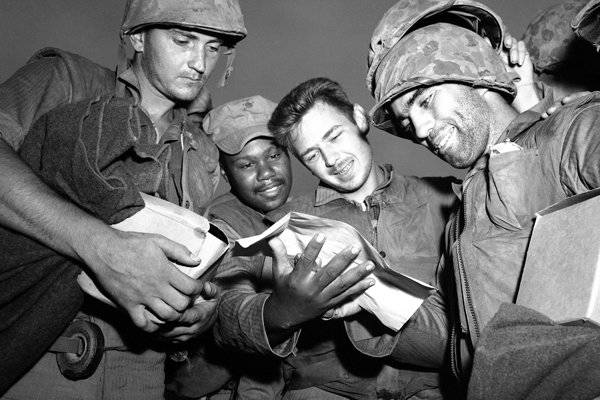
“MiGs against the Sabers and the Superfasteners” is the most famous story in Russia of the Korean War. A lot has been written about him, so in a short article it makes no sense to retell it. An interesting question about the losses. According to the original American data, the Saber shot down the 900 of the communist aircraft, including the 792 MiG. The United States itself lost all 78 F-86 and 16 B-29 in air battles. The unreality of this data was obvious. The further the war went into history, the more objective became the American data about their own and others' losses. Today, after 60 years after the end of the war, the Americans recognize the loss (for all reasons, including non-combat) of three thousand aircraft, including the 275 Sabers and 107 B-29. However, they claim the destruction of the Soviet 345 and 83 Chinese MiG-15.
According to canonical Soviet data, the 64-IAK fighters shot down 1106 enemy planes, including the 650 Sabers and the 69 Super Fortress. Own losses were 335 MiG-15 and 120 pilots. Anti-aircraft gunners shot down 153 enemy aircraft, including 35 F-86 and 7 B-29. In addition, Chinese and North Korean pilots trained by Soviet instructors shot down an 271 enemy aircraft, of which 181 Saber, their own Korean-Chinese losses amounted to 231 MiG-15. The KPA anti-aircraft artillery hit the 1284 of the aircraft, that is, the total losses of the United Nations Air Force, according to Soviet data, amounted to 2814 machines. The Chinese claim to 330 downed enemy aircraft with the loss of their 95.
Thus, in the end, the latest American data practically agreed with ours. Moreover, the Americans recognized their losses even greater than we wrote them down. And they confirmed our losses completely: we recognized the loss of 335 MiGs, the Chinese - 95. And the Americans recorded themselves 345 and 83, respectively. The only radical discrepancy, threefold, is in the number of shot down Sabers. Americans recognize the loss of 275 F-86, we attribute to them at least 866, including 831 in aerial combat. It is likely that the Soviet, Chinese and Korean pilots often considered the other types of aircraft shot down by the Saabers (first of all, the F-84, similar to the Saber silhouette).
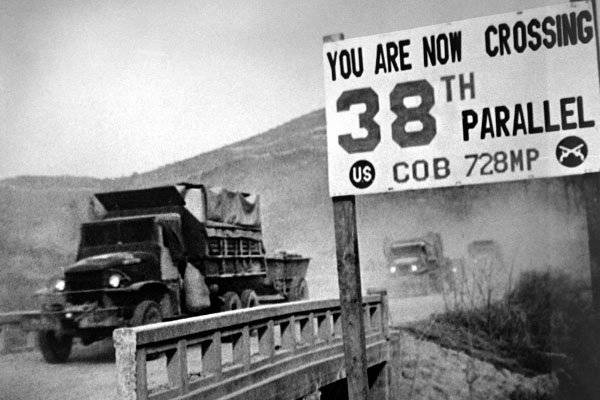
27 July 1953 was signed a truce agreement. At the same time, a full-fledged peace has not been concluded so far. The war ended where it began, on the 38 th parallel. The configuration of the border has slightly changed (in the eastern part the border has shifted to the north, in the western - to the south), but on the whole, it remained with its own. Except for the enormous human and material losses. North Korea has lost more than 1 a million people, how many of them amounted to military casualties - is not known for sure. China recognized the loss of killed and dead from wounds and diseases of 135 thousands of people, the USSR - 315 people. United States lost killed 33 629 people missing, 5,2 thousands of people. South Korea lost thousands of dead 415 people. More than 500 people killed lost the most active allies of the United States - Britain and Turkey, from 100 to 500 - Australia, Canada, France, Greece, Colombia, Ethiopia and Thailand.
Thousands of Koreans and 70,2 thousands of Chinese returned to the DPRK and the People's Republic of China from the captivity of the UN troops 5,6. Thousands of Koreans and thousands of Chinese refused to return 7,9. Thousands of people returned from communist captivity to 14,7, including 12,7 thousands of South Koreans and 7,8 thousands of Americans. 3,6 Koreans refused to return, 335 was an American and an Englishman.
From a military point of view, the war ended in a draw. Kim Il Sung did not achieve his goals, but not only retained power, but also strengthened it significantly, gradually getting rid of competitors. They strengthened their political positions of the USSR and the PRC, but already during the war the first cracks appeared in their relations. Mao believed that the USSR made an insignificant contribution to the overall victory, Stalin believed that Mao had been evading the war too long.
The United States solved the minimum task, not allowing the Communists to seize South Korea. They managed to create a coalition from 15 countries, and officially speaking under the UN flag. However, they could not achieve complete victory; moreover, at the end of 1950, the beginning of 1951, they suffered a series of heavy military defeats. The main thing is that the DPRK to this day has remained the most powerful and implacable opponent of the United States, not only in Asia, but, perhaps, in the world as a whole. Pyongyang has shown complete impunity since the end of the war, from capturing Pueblo in 1968 to rocket and nuclear tests and drowning Chong An.
The war consolidated the unnatural split of one people, moreover, the two Koreas became for each other the most irreconcilable enemies. That now, in general, is beneficial to the United States, and even more so to China. A united Korea would become too strong, and this does not suit anyone from its neighbors, except for Russia, but it is, alas, a statistician in this matter now. In the meantime, the DPRK and the Republic of Korea are closed on each other. The leadership of the DPRK would be ready to create a confederation with the Republic of Kazakhstan with preservation of the old political systems in both parts. But for Seoul, this option means that he will simply feed and maintain the North, without being able to seriously influence him. Neither can solve the issue by military means. Which does not mean that the Second Korean will not happen, and in the very near future.
Information